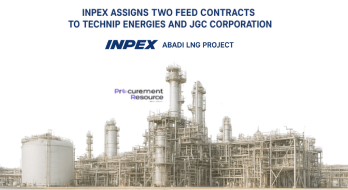ONGS inks a partnership deal with Japan’s Mitsui O.S.K. Lines for the construction of very large ethane carriers (VLECs)
.webp)
India’s state-owned Oil and Natural Gas Corporation (ONGC) has entered into a strategic partnership with Japan’s Mitsui O.S.K. Lines (MOL) to construct, own, and operate two Very Large Ethane Carriers (VLECs). This move aligns with ONGC’s broader strategy to diversify into the oil-to-chemicals business, marking a significant shift beyond its traditional exploration and production operations.
The agreement, signed on July 3, 2025, aims to secure a reliable supply of ethane, a crucial feedstock for petrochemical production, for ONGC Petro Additions Limited (OPaL). These specialized vessels will transport imported ethane to OPaL’s facility in Dahej, Gujarat, ensuring a steady raw material supply for manufacturing ethylene—a key component in plastics, packaging, synthetic rubber, and other industrial products.
ONGC describes this collaboration as a transformative step in its downstream expansion, combining innovation, scale, and energy security. The company views this initiative as more than a partnership, positioning it as a strategic move to redefine India’s petrochemical future.
VLECs are among the largest and most advanced ships designed for ethane transportation, supporting ONGC’s ambition to become an integrated energy conglomerate. Earlier this year, ONGC outlined its vision to expand beyond exploration and production into oil-to-chemicals, renewables, and natural gas, with petrochemicals emerging as a key revenue stream.
In August 2024, the Indian government approved an additional equity investment of Rs.10,501 crore in OPaL, increasing ONGC’s stake to 95.69%. This infusion strengthens OPaL’s financial structure, improving its debt-equity ratio. ONGC’s total investment in OPaL now stands at Rs.22,728 crore.
OPaL operates one of Southeast Asia’s largest petrochemical complexes, featuring a dual-feed cracker with an annual production capacity of 1.5 million tonnes of polymers and 0.5 million tonnes of chemicals. The facility, commissioned in 2017, holds a 12% market share in India’s polymer sector.
Additionally, the government has ensured a long-term supply of natural gas feedstock to OPaL from ONGC’s nomination fields, priced at a premium of up to 20% over the administered price mechanism (APM) rate. This guarantees stable operations and reinforces ONGC’s commitment to strengthening India’s self-reliance in petrochemical production.
Read More About Natural Gas Production Cost Reports - Get Free Sample Copy in PDF
By venturing into ethane transportation and petrochemicals, ONGC is positioning itself as a key player in India’s evolving energy landscape, driving both industrial growth and energy security.


.webp)
